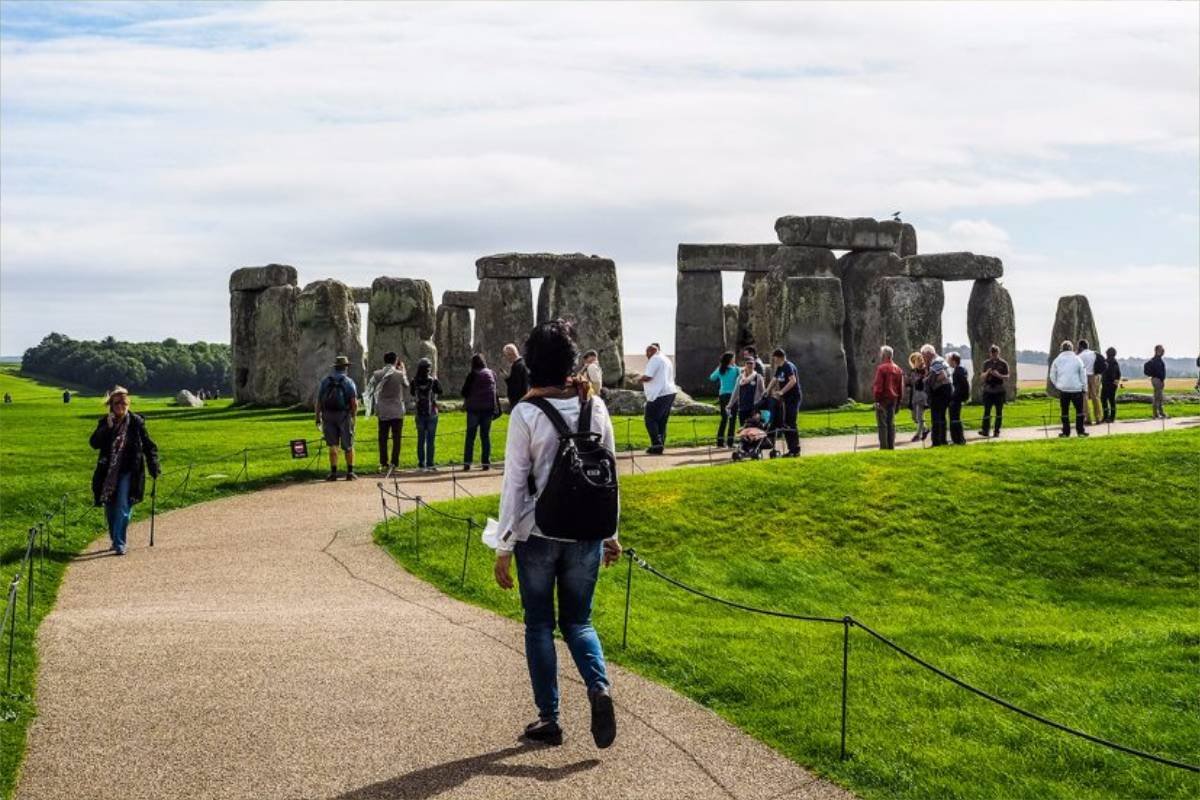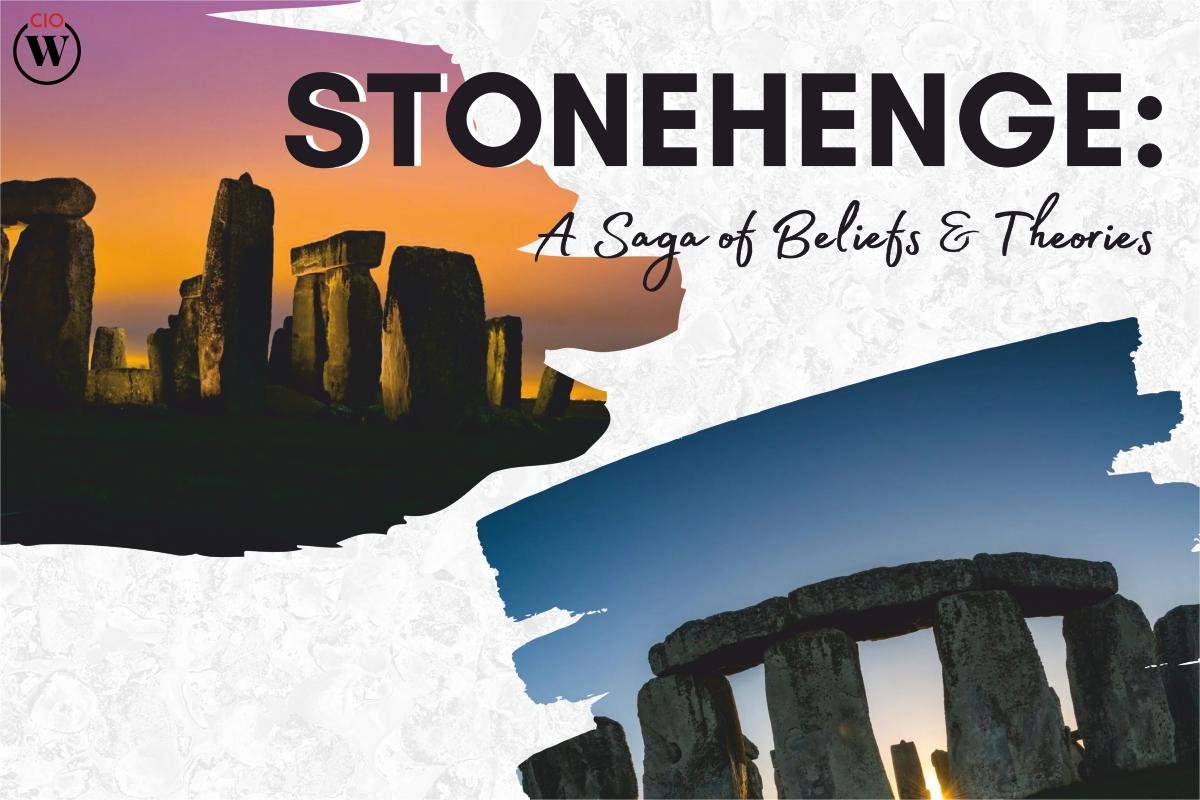If you’re an archaeologist or a person who is fascinated with different structures and the stories or mysteries behind them, Stonehenge is a good option to study in depth. The pre-historic stone monument holds a supernatural anonymity. The unlikeliness of its construction the history holds more spookiness.
Circular in shape, its outer ring consists of vertical sarsen standing stones. A lot of archaeologists and scholars are still looking for answers to their questions. The reason for the rumor of it being spooky is that the Sarsen stone which was used to build Stonehenge occurred as loose or semi-buried boulders. They are not connected in any way. A pre-historic monument, Stonehenge is perhaps the world’s most prominent monument. It is located 3 km west of Amesbury.
Many researchers have suggested that Stonehenge was used as a cemetery for adult men and women for about 5 centuries. That time was the first two main stages of the construction of Stonehenge. It is said that the place was a cemetery for a selected group of people who were treated separately from the rest of the population. It was a powerful and noteworthy site in the Neolithic period. As per experts, 40% of the people buried there came from west Wales. Those people are also believed to have helped with the transportation of the stones and build the Stonehenge.
Some questions surrounding Stonehenge:
A lot of questions remain unanswered about Stonehenge. As we see the structure a lot of questions pop up in our mind. A lot of experts and archaeologists have claimed or stated many things about it. To date people are finding solutions to simple questions like how the stones are not connected, and if they aren’t connected how do they stand up there?
- What is The Great Fall?
It is said that the trilithon collapsed over two centuries ago. Three of the largest megaliths are believed to have fallen and it was the first time that such an event was recorded. This is one in three such events in which the stones are said to have fallen at the site in modern times.
- Who Built Stonehenge?
The monument was constructed in distinct stages and the builders of it belonged to specific groups. The first group, the Windmill Hill people built large circular furrows and mounds. The majority of their burial mounds point east-west. Their roots belong to eastern England. They were the first hunting and semi-nomadic groups. They maintained a strong devotion to circles and symmetry.
The second group, The Beaker people were thought to have originated from Spain, migrating northwards and finally colonizing in north-west Europe. Instead of burying their dead people in graves, they showed more accountability for death by placing them in small round-shaped graves marked by mounds called tumuli. It was presumed by archaeologists that the Beaker People were more warlike by behavior as compared to most of the tribes as they buried their dead with more weapons like daggers and battle axes.
- Are humans not allowed to touch it?

A few years ago, the Stonehenge was laser scanned. Each stone has suffered damage due to the hands of people. It has prehistoric carvings of axes on many stones, but most of them have faded away except for one particular one. The simple reason for not allowing to touch the monument is to keep it as it is. The human touch to it causes damage and changes in shape.
- Is the monument an ancient clock?
Stonehenge is about tracking the Sun through its yearly cycle. So it is perfectly set up to indicate the time of the year. The Astronomer, Sir Fred Hoyle, suggested a simple marker moved around the bluestones that would track the Sun to an accuracy of about a week.
- How deep is it?
There are varied stones of different sizes and shapes. The period since its construction is also long. The largest stone, known as Stone 56, goes 2.13 meters deep into the ground. Due to the weight, the stones have sunk into the ground.
- Why the circular shape?
The structure of the Stonehenge is astonishing for sure. The reason for it being circular isn’t known. However, it is believed that the stones were placed carefully in line to track the Sun’s movements to predict the time and seasons of the year. It is also believed that the structure holds some religious sentiments of the people who constructed it.
The Masterminds behind the Monument:
- John Aubrey (1626-1697):

He was a Wiltshire-born antiquarian who made the first drawing of Stonehenge in 1666. He also encountered cavities in the ground. Those were seen as pits and are now famously known as Aubrey Holes. His observations and other stone circles around Britain led him to conclude they were built by the native Britons.
- William Stukeley (1687–1765):
Stukeley coined the term Trilithon in 1723. He spent two and a half days taking over 2000 measurements of the planned monument. In this way he proved that Stonehenge could not be Roman, as by using their unit of measurement, the distance between the stones had produced fractions of numbers which he decided were laughable and without any design.
- William Cunnington (1754–1810):
Cunningston’s doctor had advised him to ‘ride out or die’. He took it seriously and started taking regular strides across the Salisbury Plain. He made way for 465 barrows in Wiltshire including the Bush Barrow. He did this with the support of Sir Richard ‘Colt’ Hoare over 7 years as he was mainly interested in ancient burial mounds.
Why was it built?
We can only draw presumptions surrounding the making of an architectural gem. Aligning with the equinox points, Stonehenge composed heavenly events. During midsummer, the sunrise near the Heel Stone, illuminating the monument’s center depicts intentional alignment. The Sun dusks perfectly between the largest sarsen stones which indicates another deliberate set of arrangement. Stonehenge developed not only as a spiritual monument but also as a functional clock that predicts solstices. It is a testament to ancient inventiveness which serves as both, a timekeeper and a symbol of power.

The area around Stonehenge:
Stonehenge is famous for its grandeur and the sheer amount of time devoted to it for completing the construction. The area which was chosen to place it is of pre-historic importance. The barrows around the monument are not rare, but they certainly are for their unique grouped and dense distribution. The total number of barrows goes to 460, which consists of 6 types, namely, bell, bowl, disc, long, pond, and saucer.
Constructed during 3600 BC, West Kennet long barrow- the largest chambered tomb in England, represented a prelude to Stonehenge.









